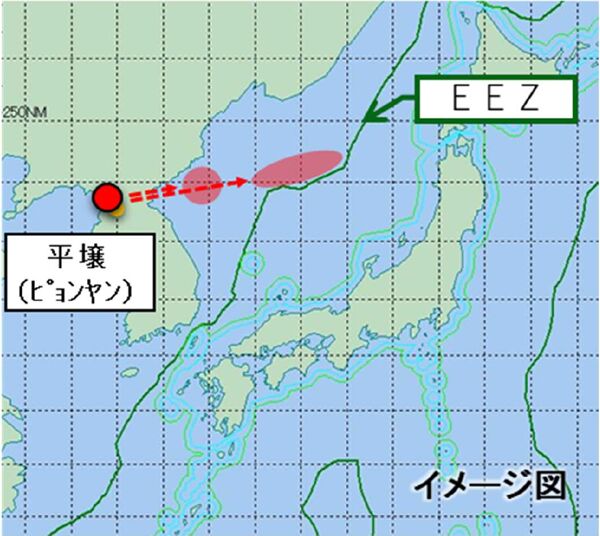
This graphic by the Japanese MoD shows what it said are the trajectories of two of three ballistic missiles launched by North Korea on 25 May. The MoD said both fell in the East Sea outside of Japan's exclusive economic zone. (Japanese Ministry of Defense)
North Korea has fired three more ballistic missiles towards the East Sea, defence officials from Japan, South Korea, and the United States announced on 25 May.
Pyongyang has not confirmed the launches, but South Korea's Joint Chiefs of Staff (JCS) and the Japanese Ministry of Defense (MoD) said possibly three ballistic missiles were from fired from the west coast of North Korea around 0600 h local time.
According to the JCS, the first of the three missiles featured what it said was a suspected intercontinental ballistic missile (ICBM), possibly the Hwaseong-17, that flew 360 km at a top altitude of 540 km.
It said the second missile was a suspected short-range ballistic missile (SRBM) that flew to an altitude of 20 km and then “vanished” because of a suspected failure. The JCS said the third missile is thought to be another SRBM that flew 760 km, with a maximum altitude of 60 km.
The SRBMs are likely a variant of the KN-23, similar to versions that North Korea has launched on several occasions in 2022.
In Japan, the MoD said it assessed that the first missile launched by North Korea had a different flight trajectory to the other two. It said it detected that the missile flew about 300 km and reached a maximum altitude of about 550 km.
Looking to read the full article?
Gain unlimited access to Janes news and more...







